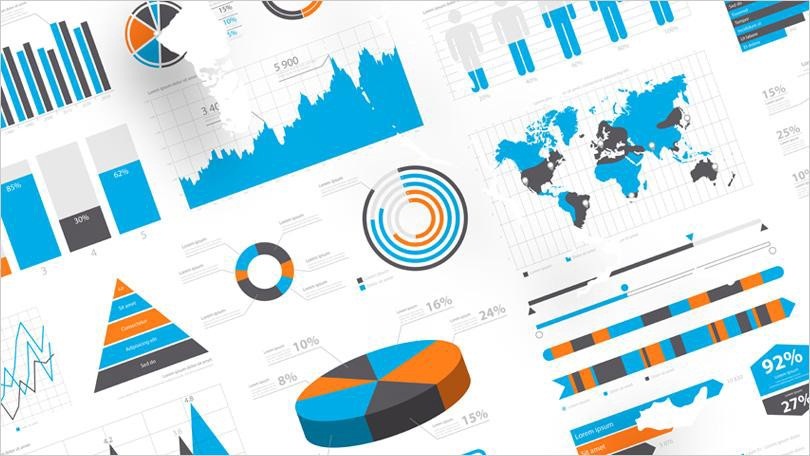We know how popular Tableau is in the BI world. The easy to use interface and the attractive and insightful way in which it helps present information has helped it become the best in its niche. This has led to Tableau being used to solve a number of real-world problems by numerous global enterprises.
Currently,the popularity of this BI tool is so great that there is a huge demand for professionals with Tableau skills all across the world. Numerous companies from different domains are looking for professionals who can work with Tableau and for interested professionals,leading training companies like PST Analyticsto provide the relevant training and certification in Tableau. Apart from understanding the BI tool and knowing how to work with it, understanding its usefulness in the real world is also essential. In this post, we will look at some of the must-know Tableau case studies that will help shed light on the real-world strengths of the application and its usefulness in solving problems in real-time.
JPMorgan Chase
JPMorgan Chase is an American multinational investment bank and financial services company, the largest bank in the US, the 6th largest in the world and the most valuable global bank as per market capitalization.
The problem
Being a multinational company with millions of customers and countless products and services, JPMorgan Chase had enormous amounts of data but didn’t have efficient tools for data analysis and reporting. So, they needed a tool that could extract information from the available databases and provide real-time analysis for the use of their myriad departments.
Impact of Tableau
After implementing Tableau, JPMorgan Chase was able to realise positive results in the following areas:
- Theywere able to improve their relationship with the customers and provide them with better products, marketing and services tailored to specific regions by analysing trends and customer behaviour and customer requirements.
- The company was able to design and deploy targeted marketing campaigns, streamline its website design and launch new products by using this BI tool.
- Finally, the firm was able to reduce the time required to analyse data and quickly pull detailed reports that were clear, attractive and easy for people of all skillsets and across different platforms to understand and helped them make decisions effortlessly.
Chipotle Mexican Grill
Chipotle Mexican Grill Inc. is an American fast-food chain that has more than 2400 locations in the US, UK, Canada, Germany and France. One of the fastest-growing fast-food chains in the world, as of 2010 Chipotle was known to serve as many as 750,000 in a single day.
The problem
Though it had millions of TB of data from all the various store locations across the globe, it had problems analysing the data and getting clear information in a sharable format. So, they needed a tool that could take care of duplicates and analyse the captured data to maintain operational effectiveness.
Impact of Tableau
After embracing Tableau on a company-wide basis, they were able to see results in the following areas:
- There was a marked increase in operational effectiveness even at the base-level, i.e., in individual stores. They were able to streamline the operation of individual stores so as to improve customer satisfaction and eliminate non-functional elements that lead to improved performance of the said stores.
- The modern analytical process provided by Tableau helped save time and energy. Analysts were able to reduce the time required for generating reports and also create reports that were visually attractive, clear and easy to access by individuals in multiple locations.
Lenovo
Lenovo is a Chinese multinational company that designs, manufactures and sells user electronics like computers, smartphones, smart TVs and electronics and storage devices. It is an electronics giant that sells products in over 160 countries worldwide and has offices in over 60 countries.
The Problem
Using Excel for creation of reports was very time-consuming. It took a team of 8 to 10 people 6-10 hours every day for a single weekly report. So, they required an automated tool that could consolidate data and generate reports quickly, reducing the time and effort andeliminate the requirement to create reports manually.
Impact of Tableau
- The main impact of using Tableau was the ability to eliminate the need for creating reports manually. This drastically reduced the time; effort and the manpower required to consolidate information and pull reports.
- Additionally, Tableau provided Lenovo with myriad formats in which the results of data analysis could be shared in a way that was easy to understand across all levels of employees.
- The measurable results that Lenovo could realizeusingTableau include increased operational efficiency by 95% and an exponential growth in e-commerce, which was a result of analysing user experience, user behaviour and online trends.
With so many real-world examples of successful integration of Tableau with organisational functions, it has emerged as the most popular business intelligence tool of present times. With regular updates and improvements introduced on a regular basis, Tableau is expected to maintain its lead position for many more years to come.


